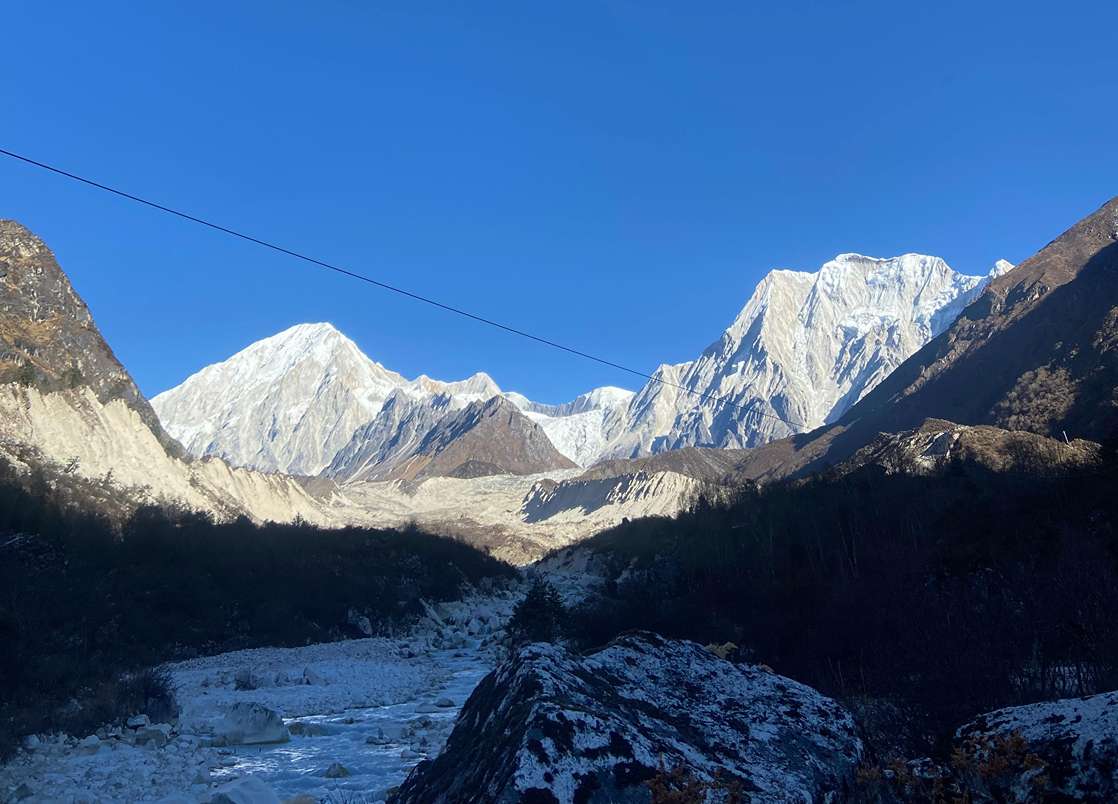Top Photography Spots on the Manaslu Circuit Trek
The Manaslu Circuit Trek is one of Nepal’s most scenic trails, winding nearly 180 kilometers through river valleys, alpine meadows, and high passes.

-
admin
-
15 September, 2025
-
5 mins read
-
142 Views
-
0 Comments
Unlike the busier Annapurna or Everest routes, the Manaslu Circuit feels raw, remote, and unspoiled. For trekkers carrying a camera, it offers a dreamlike variety of subjects—snow-draped mountains, turquoise lakes, quiet monasteries, and stone-built villages.
With Nepal trekking season for 2025/26 now open (note: Lukla flights from March will operate via Ramechhap), it’s the right time to plan both your journey and your photography. Below, we’ll guide you through the best photography spots along the circuit and share tips to capture their magic.
Scenic Viewpoints
Larkya La Pass (5,160 m)
The highest and most dramatic point of the Manaslu Circuit, Larkya La Pass delivers a sweeping panorama of Himalayan giants. At sunrise, the snowy flanks of Mount Manaslu glow golden, while peaks like Cheo Himal, Kang Guru, and Annapurna II rise in the distance. The pass itself is adorned with fluttering prayer flags, creating a vibrant foreground against an ocean of rock and ice.
Photography tip: Arrive before dawn to catch alpenglow. Use a wide-angle lens to frame trekkers, prayer flags, and surrounding peaks in one expansive shot.
Birendra Lake (4,500 m)
Set beside the Punhyen Glacier, Birendra Lake shimmers like a sapphire gem. On calm mornings, its turquoise waters perfectly mirror Manaslu and Himalchuli, giving photographers reflection shots straight out of a painting. The rocky shoreline adds natural texture, and in early light, the entire lake feels otherworldly.
Photography tip: Get low at the shoreline to include rocks or prayer flags in the frame. Bring an ND filter for soft water effects.
Villages and Cultural Photography
Namrung (2,630 m)
A charming Gurung village, Namrung is framed by terraced fields that cascade down the hillsides. At sunset, the entire valley glows amber, while the Ganesh and Siringi Himal loom dramatically in the distance. Traditional stone houses, mani walls, and prayer wheels add cultural layers to the landscape.
Photography tip: Use a telephoto lens to compress the patterned fields and rugged peaks into one layered image.
Shyala Village (3,400 m)
Surrounded by rhododendron forests and Himalayan pine, Shyala is a serene spot with open views of Manaslu, Himalchuli, and Ganesh Himal. In spring, the hills burst into color as rhododendrons bloom, adding bright red and pink accents against snowy ridges. The village rooftops make excellent vantage points for sunrise shots.
Photography tip: Capture prayer flags silhouetted against pastel skies for moody dawn compositions.
Lho Village (3,180 m)
Home to the ancient Ribung Monastery, Lho is a unique blend of culture and mountain grandeur. The monastery aligns perfectly with Mount Manaslu, making it one of the most photogenic cultural landmarks on the trek. Sunset bathes the golden roof in warm light, contrasting beautifully with the icy backdrop.
Photography tip: Use natural frames—monastery windows, archways, or prayer flags—to add storytelling depth.
Hidden Nature Spots
Samdo (3,875 m)
Perched near the Tibetan border, Samdo feels stark and isolated. Stone homes, barren ridges, and endless horizons give the village a raw, almost lunar atmosphere. With Annapurna II and Hiunchuli on the skyline, the minimalist beauty here is striking.
Photography tip: Try black-and-white photography to highlight textures and contrasts in the rugged terrain.
Pungyen Gompa (~3,800 m)
Reached via a detour from Sama Gaon, Pungyen Gompa sits above a gorge, surrounded by colorful prayer flags and sweeping Himalayan views. The monastery itself, with crimson-robed monks and butter lamps, adds a spiritual depth that blends seamlessly with the natural surroundings.
Photography tip: Frame locals or monks in your shots to add scale and human connection to the dramatic landscape.
Bhimtang Valley (3,720 m)
Descending from Larkya La, trekkers enter the vast Bhimtang Valley. Wide meadows, braided rivers, and glacier-carved ridges stretch as far as the eye can see. In afternoon light, the valley glows golden, making it one of the most peaceful yet photogenic spots of the trek.
Photography tip: If allowed, drone photography captures the valley’s immense geometry—winding rivers, meadows, and jagged ridges.
Photography Tips for the Trek
- Golden Hours Rule: Sunrise at Larkya La and sunset at Lho Village offer the best lighting.
- Seasonal Shots: Spring rhododendrons bring color; autumn skies bring clarity.
- Essential Gear: Wide-angle lens for panoramas, telephoto for peaks, polarizer to enhance skies, ND filters for lakes and streams.
- Weather Advantage: Overcast skies soften harsh shadows, perfect for portraits and moody landscapes.
Conclusion
The Manaslu Circuit isn’t just a trek—it’s a journey through some of the Himalayas’ most photogenic landscapes. From the glowing peaks of Larkya La Pass to the mirror-like surface of Birendra Lake, from cultural treasures like Lho and Namrung to hidden gems like Pungyen Gompa and Bhimtang Valley, every step offers a new story to capture.
For photographers, this trail is both a challenge and a reward, combining natural grandeur with cultural richness. As trekking season for 2025/26 opens, now is the time to lace up your boots, charge your batteries, and let your lens tell the story of the Manaslu Circuit. The pictures you bring home will be more than images—they’ll be memories etched in light, silence, and Himalayan beauty.
Comments (0)
Write a commentRead the latest Blogs & Insights
Explore our collection of articles and insights to gain in-depth travel knowledge, expert advice, and stay updated on the latest trends and tips.

















No comments yet.